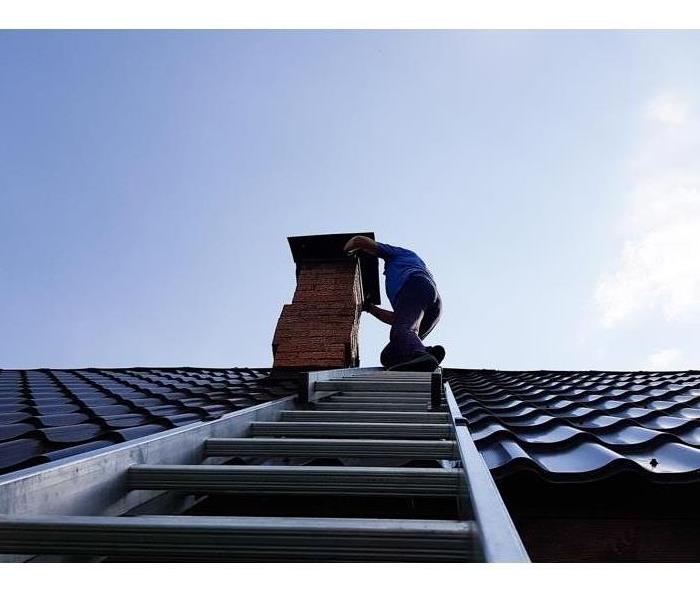Cleaning Your Chimney Will Lower a Chance for a Fire
9/22/2022 (Permalink)
Cleaning your chimney annually can help to prevent a fire from happening in your home. By removing the soot and creosote build-up from your chimney, you can help to create a safe environment for yourself and your family. Soot and creosote are highly flammable and can easily ignite, causing a dangerous fire in your home.
Signs of a Chimney Fire
When you see any of the following signs, it means you have a chimney fire and should call your local chimney sweep or fire department immediately.
- There is excessive smoke coming from the chimney.
- You can smell something burning in the house.
- You can see flames or sparks coming from the top of the chimney.
- The bricks around the top of the chimney are cracked or missing.
- The metal liner inside the chimney is damaged or corroded.
Roof Damage Because of a Chimney Fire?
Chimney fires can cause significant damage to a roof. The heat from the fire can warp and melt the roofing material, and the smoke and soot can discolor and corrode the metal flashing around the chimney. In extreme cases, the fire may even cause the chimney to collapse.
If you have a chimney fire, it's important to take steps to prevent further damage to your home. Be sure to call a professional restoration company to assess the damage and help you get your home back to normal.
Puff Back Through the Chimney?
Puff Back is a condition where flammable creosote deposits in a chimney or furnace explode, sending soot and ash spewing into the air. The name comes from the sound of the explosion, which is similar to that of a cannon.
Creosote is a black, tarry substance that forms when wood or coal is burned incompletely. It can accumulate in chimneys and ductwork over time, and if it's heated to the point of combustion, it can cause a Puff Back.
Are Soot and Smoke Inhalation the Same?
The short answer is no, they are not the same. Soot is a black or brown powder that is produced when something burns, such as coal, wood, or oil. Smoke is made up of soot and other particles that are created when something burns. Inhalation of soot can cause health problems such as coughing, difficulty breathing, and chest pain. Inhalation of smoke can also cause health problems, including coughing, difficulty breathing, chest pain, and asthma attacks.
What Happens After a Chimney Fire?
If you experience a chimney fire, the best thing to do is call your insurance company and SERVPRO for fire damage restoration. A professional will come in and assess the damage, clean up the soot and ash, and repair any damages caused by the fire. It's important to act quickly after a chimney fire because the longer the soot and ash sit in your home, the more damage they can cause.
Why Call SERVPRO to Help?
If your home has suffered a chimney fire, it's important to call in the professionals to help get your property back to normal. SERVPRO is one of the leading restoration companies in the country, and they have the experience and expertise necessary to properly deal with the aftermath of a chimney fire.
Chimney fires can cause a lot of damage, not just to your chimney but also to your roof and home interior. The soot and ash from the fire can be extremely corrosive, and can quickly eat away at metal, wood, and other materials. SERVPRO's team of experts will work quickly to clean up the mess and restore your home to its former glory!




 24/7 Emergency Service
24/7 Emergency Service
